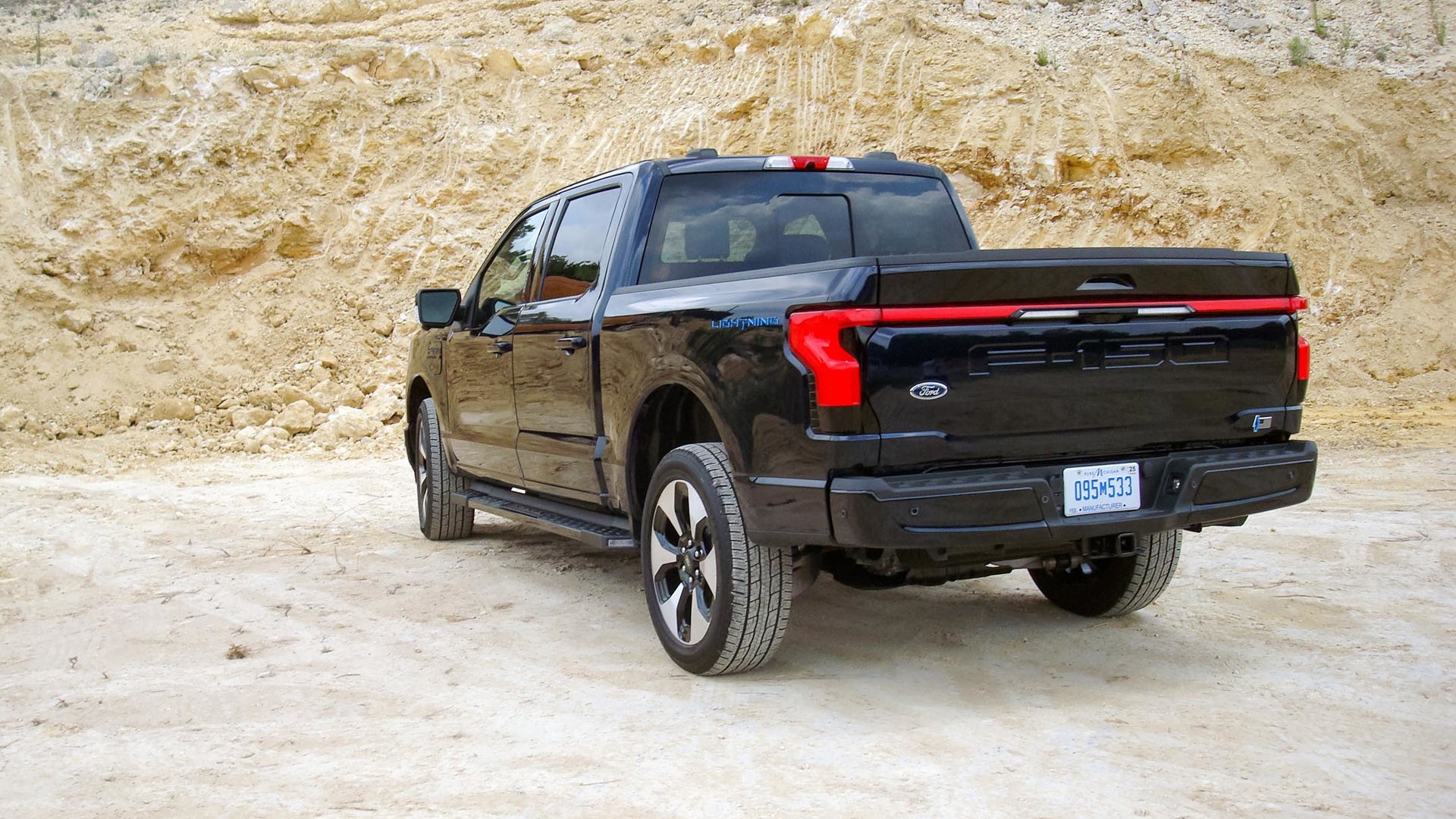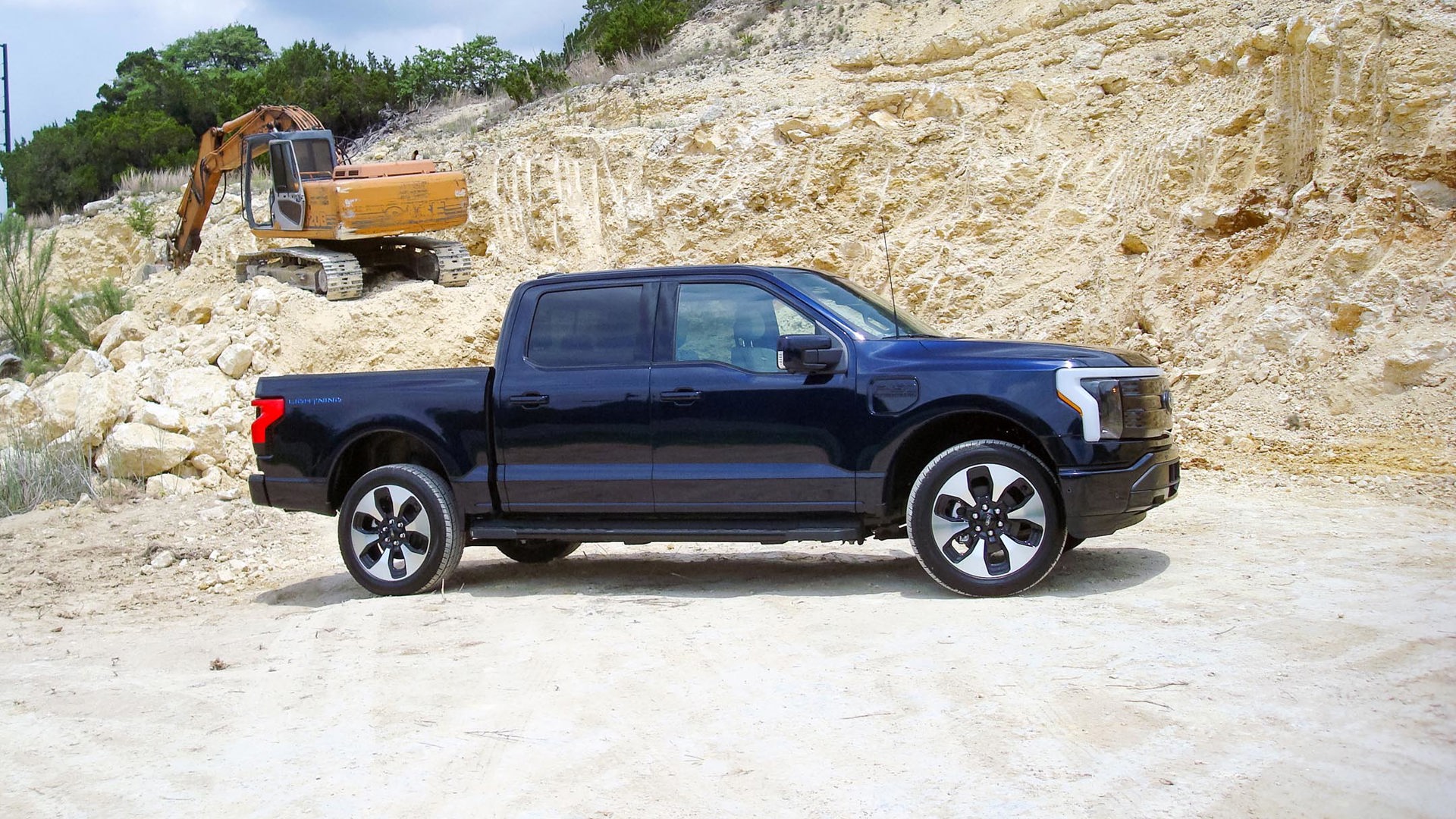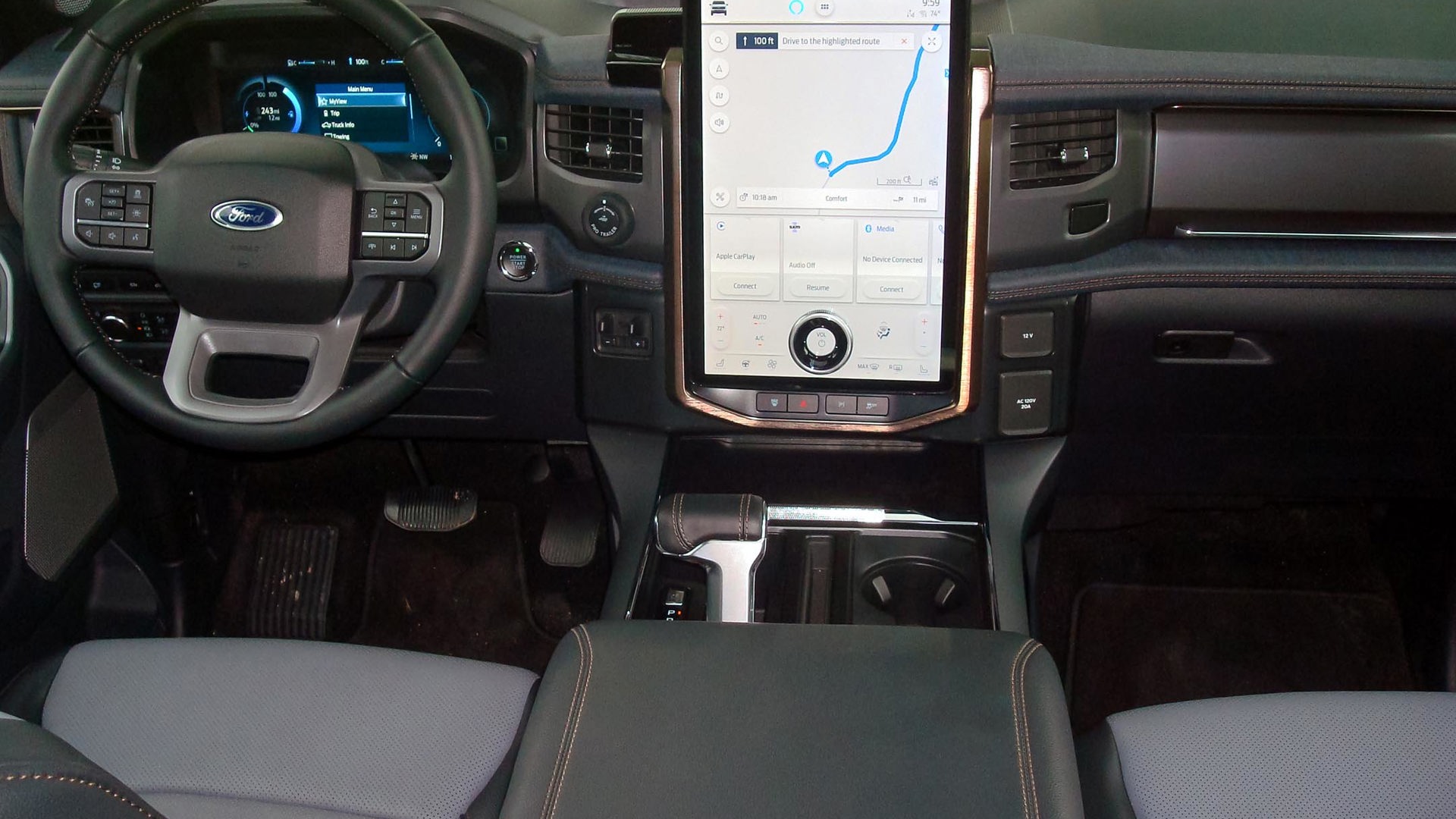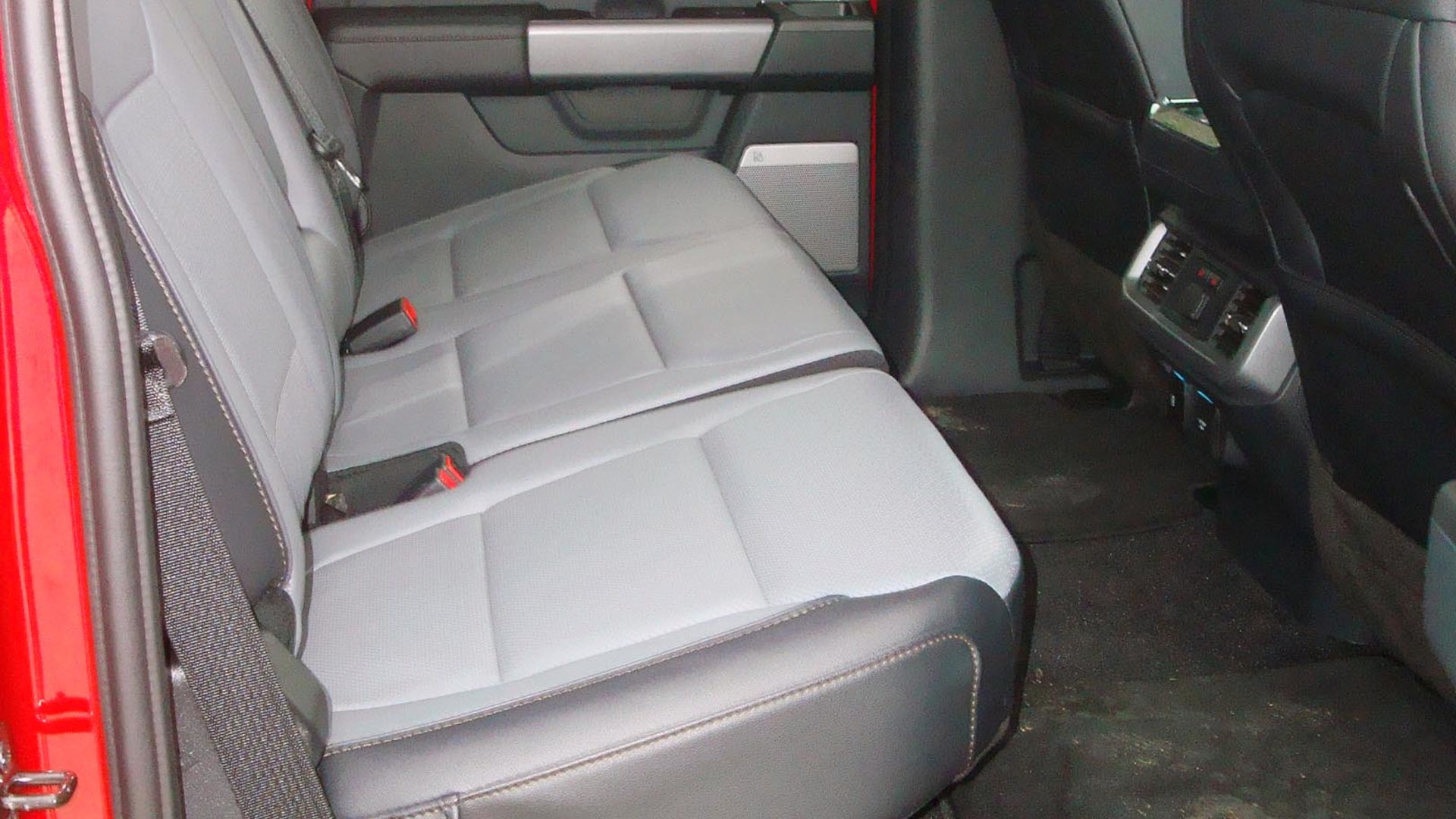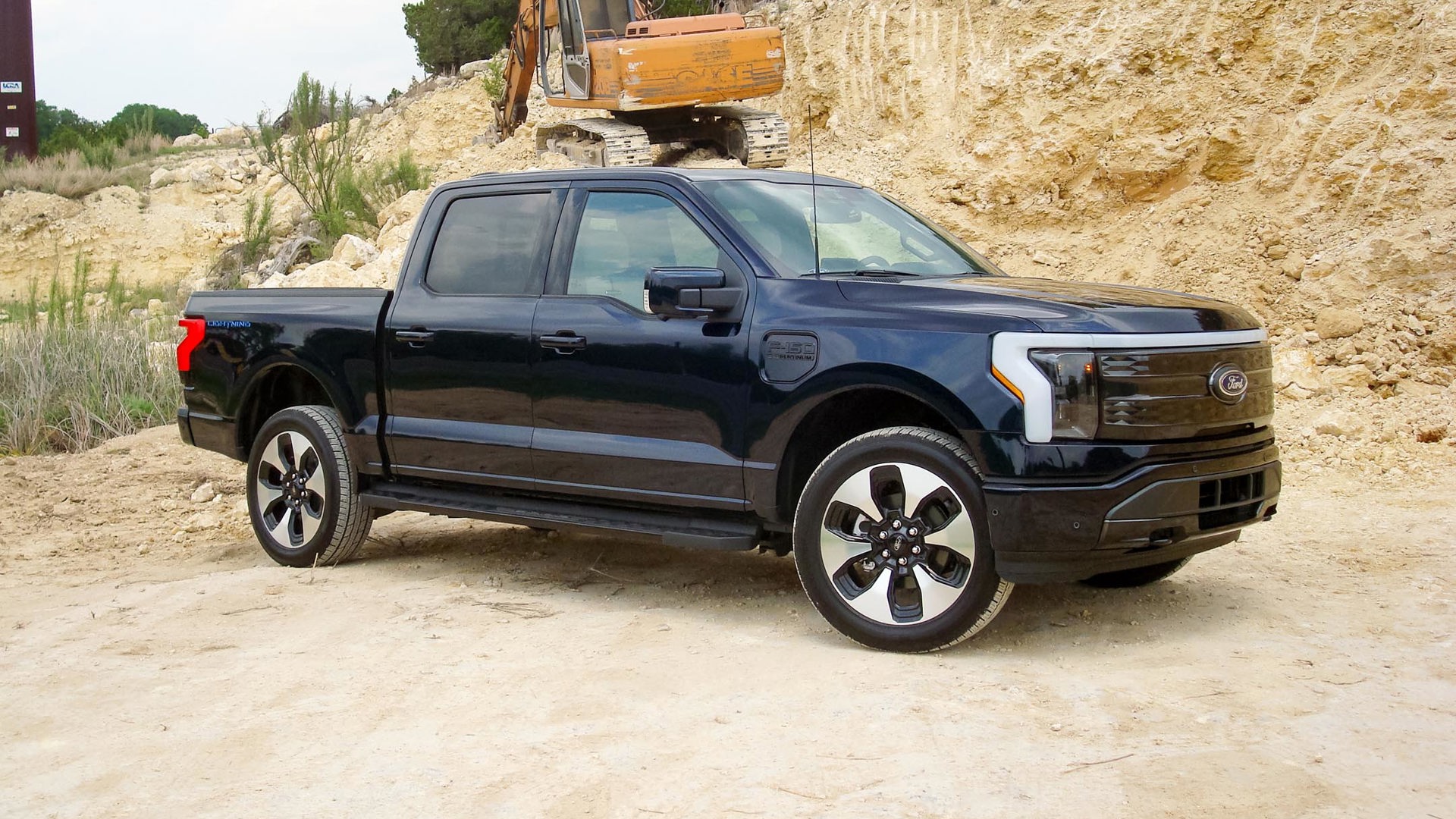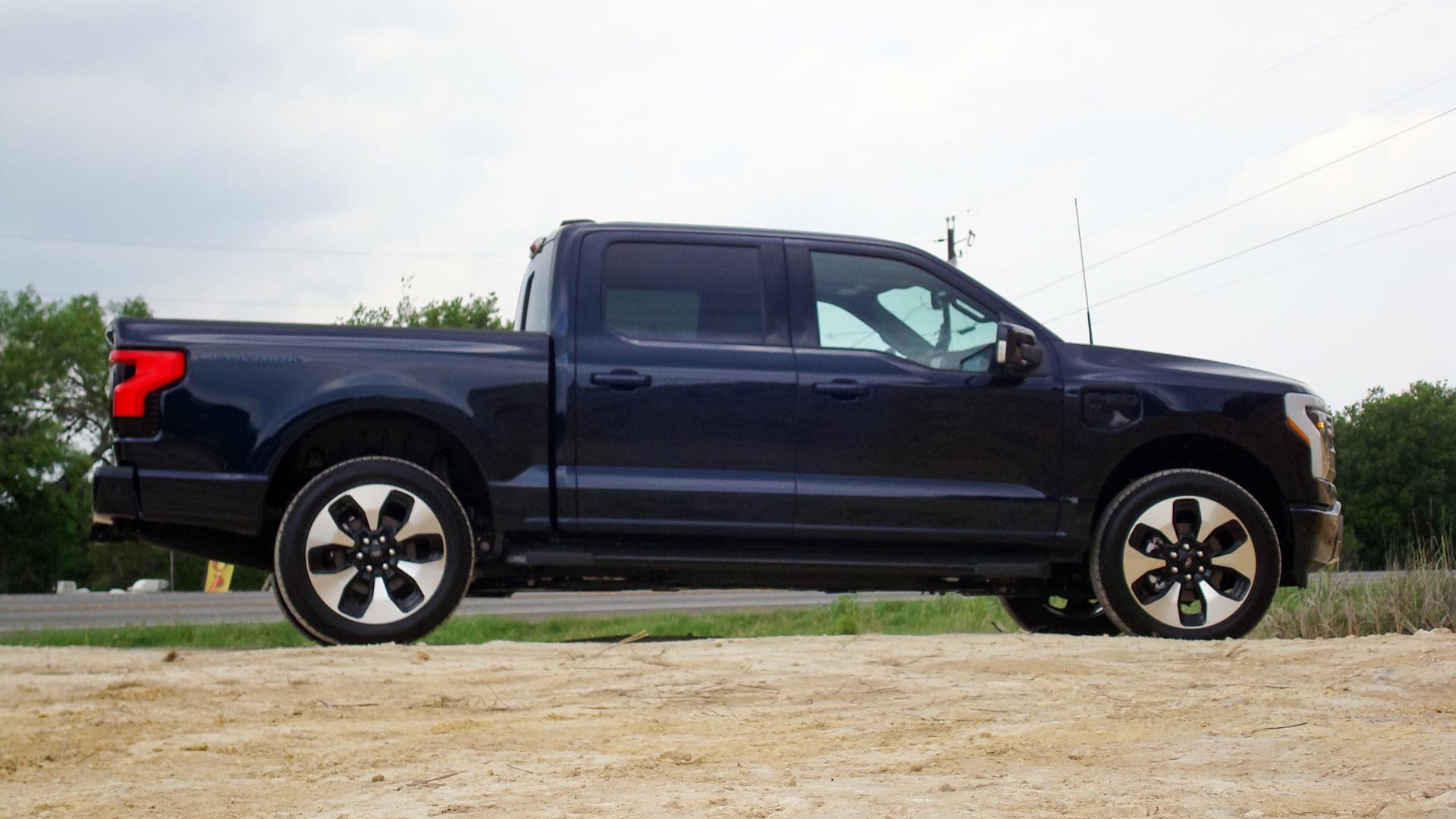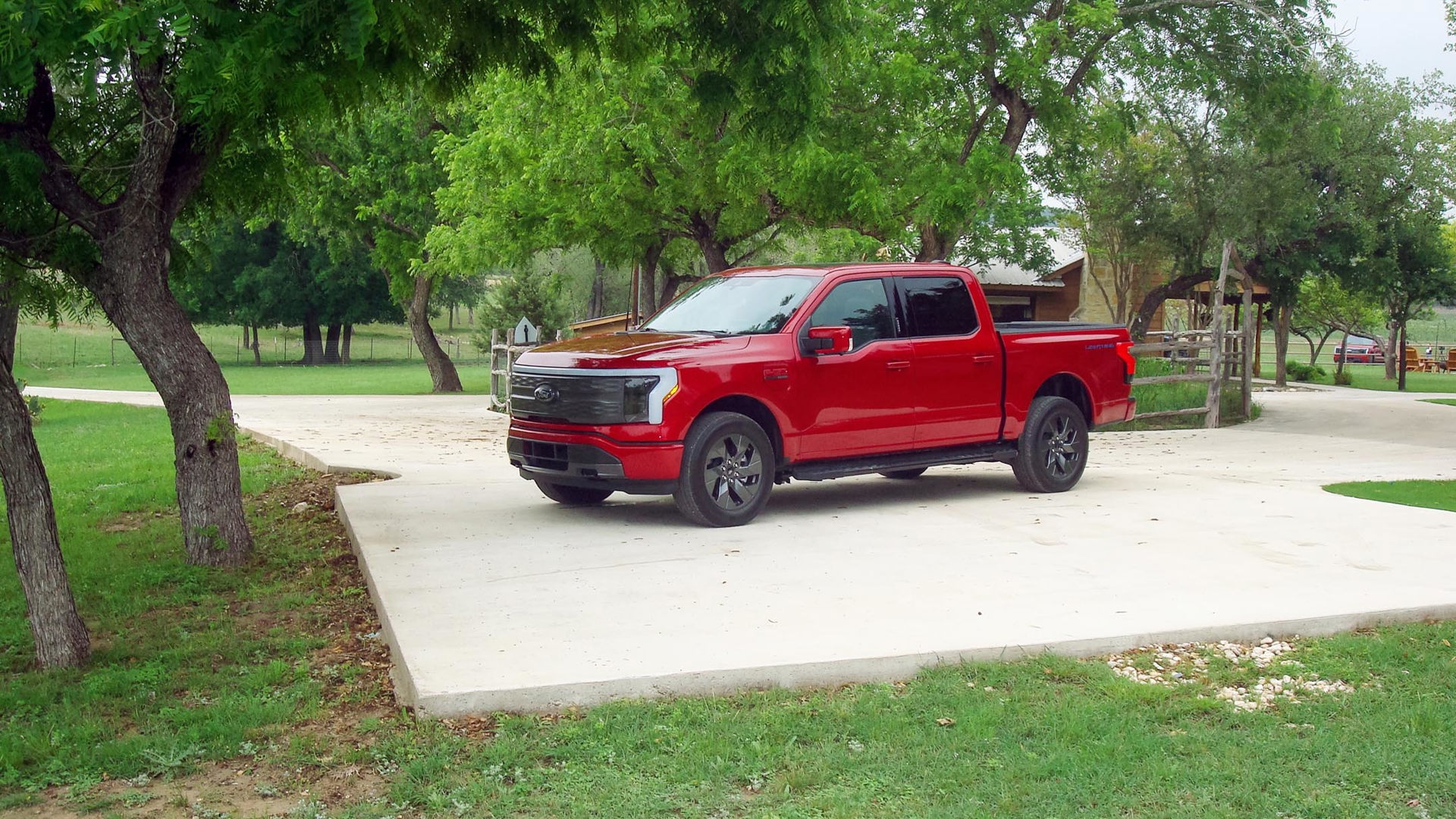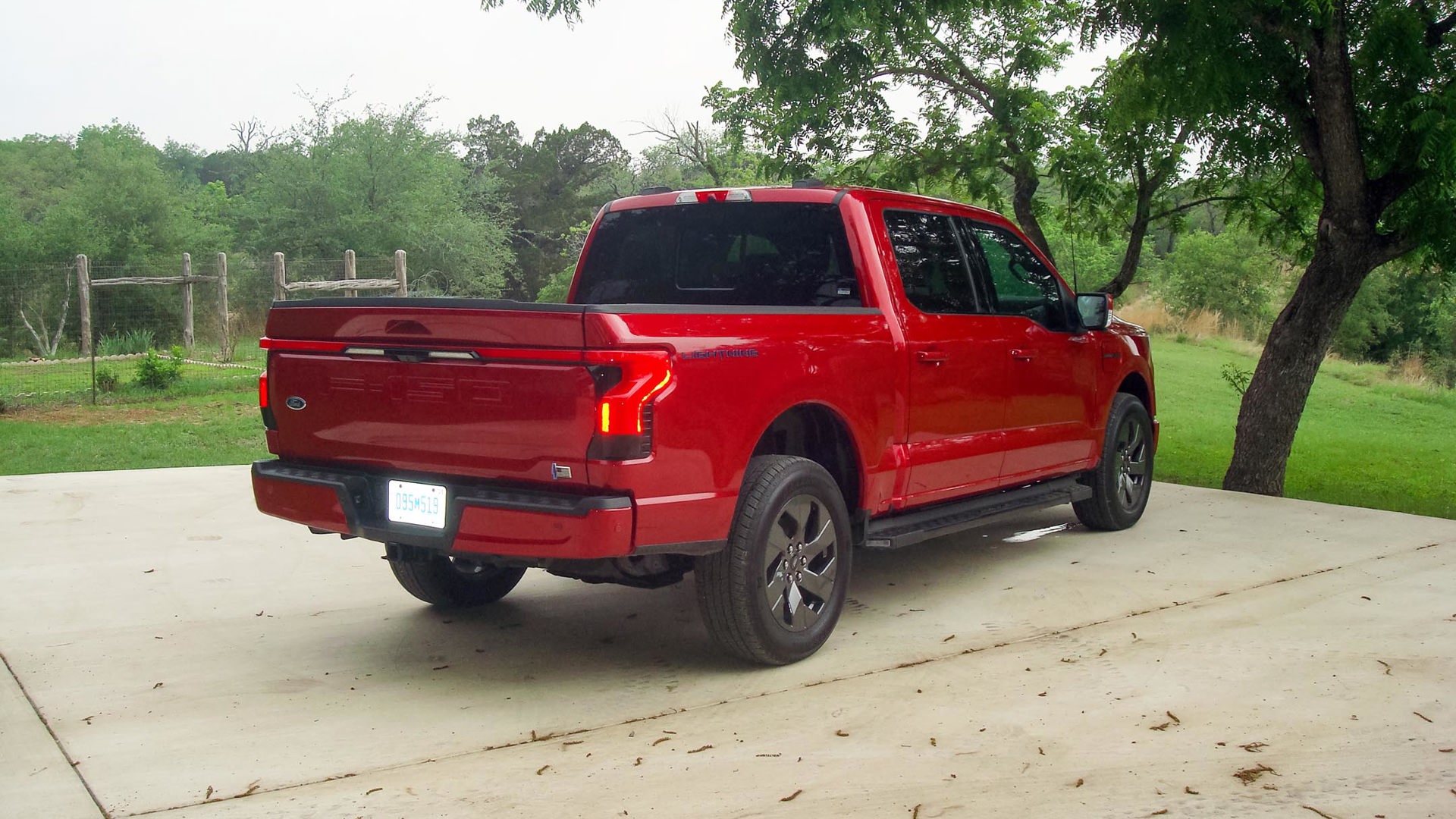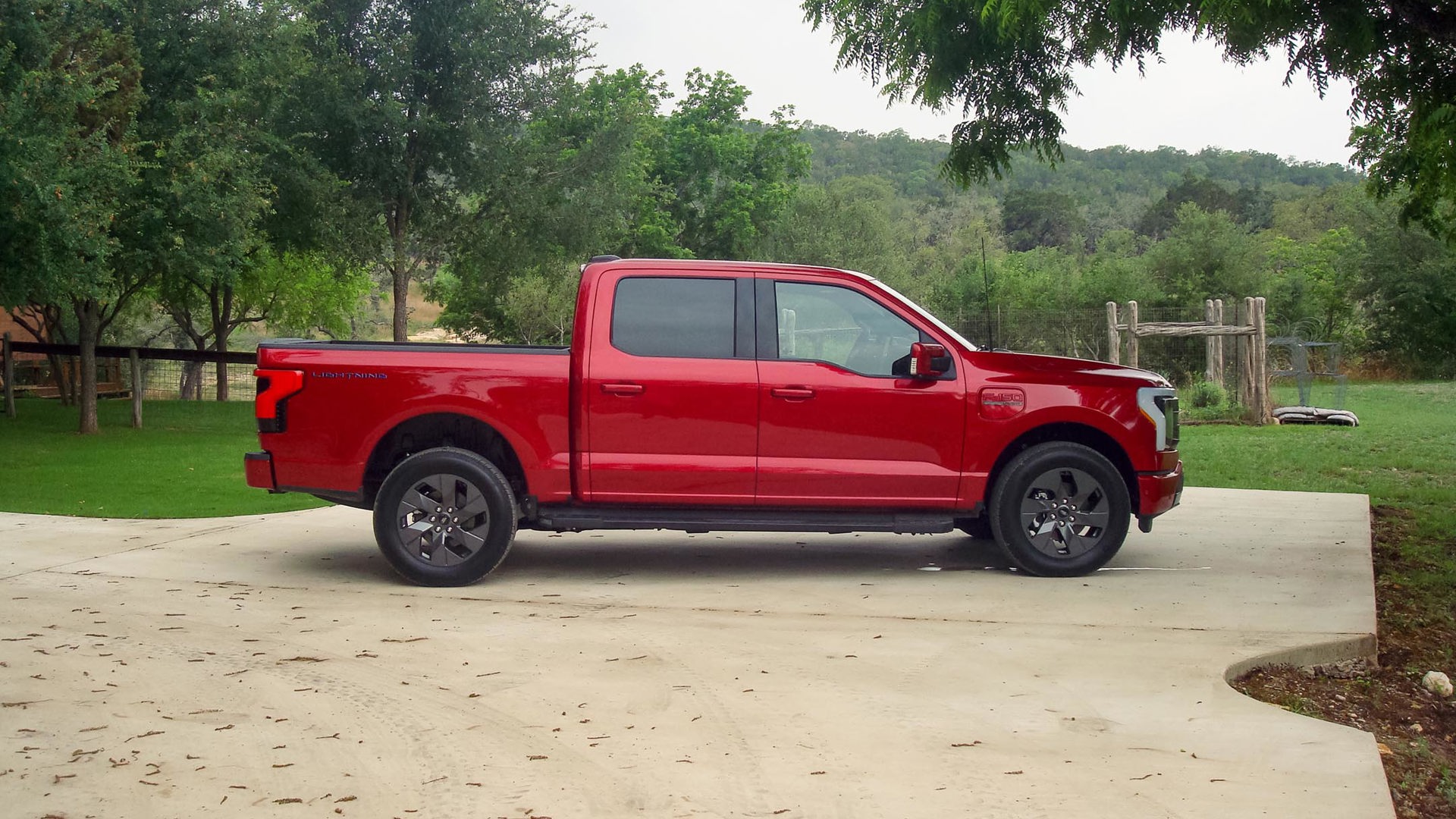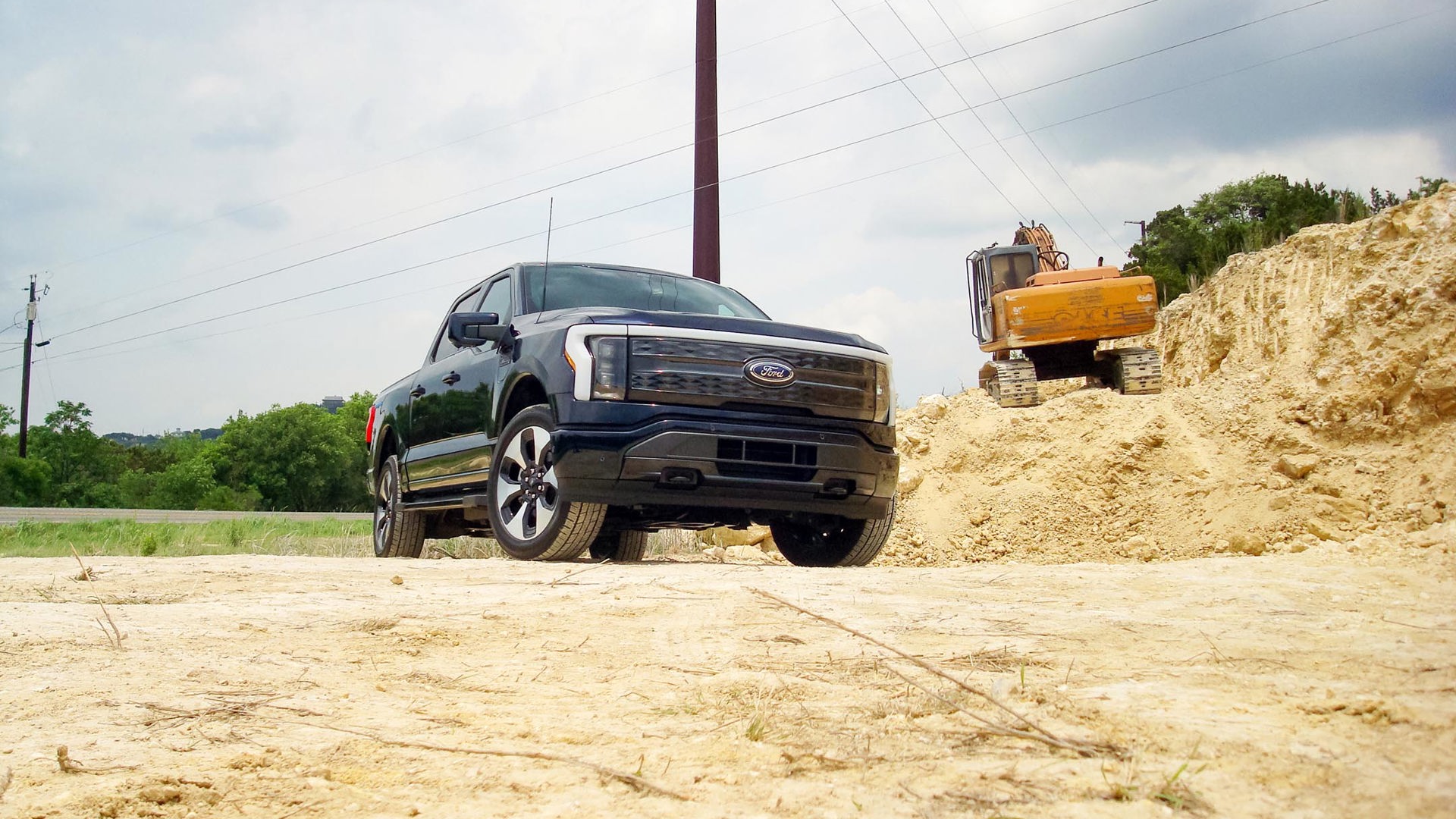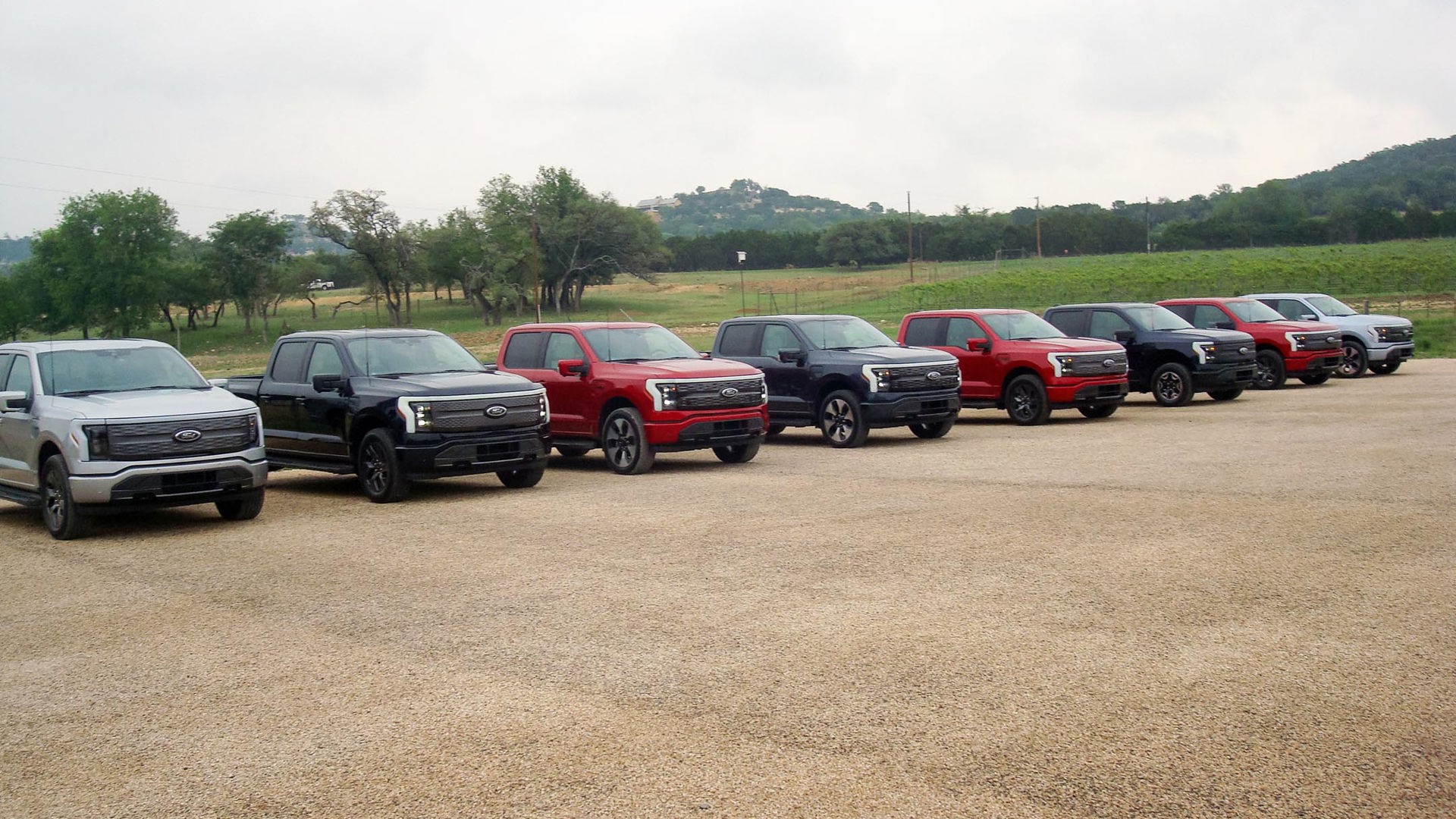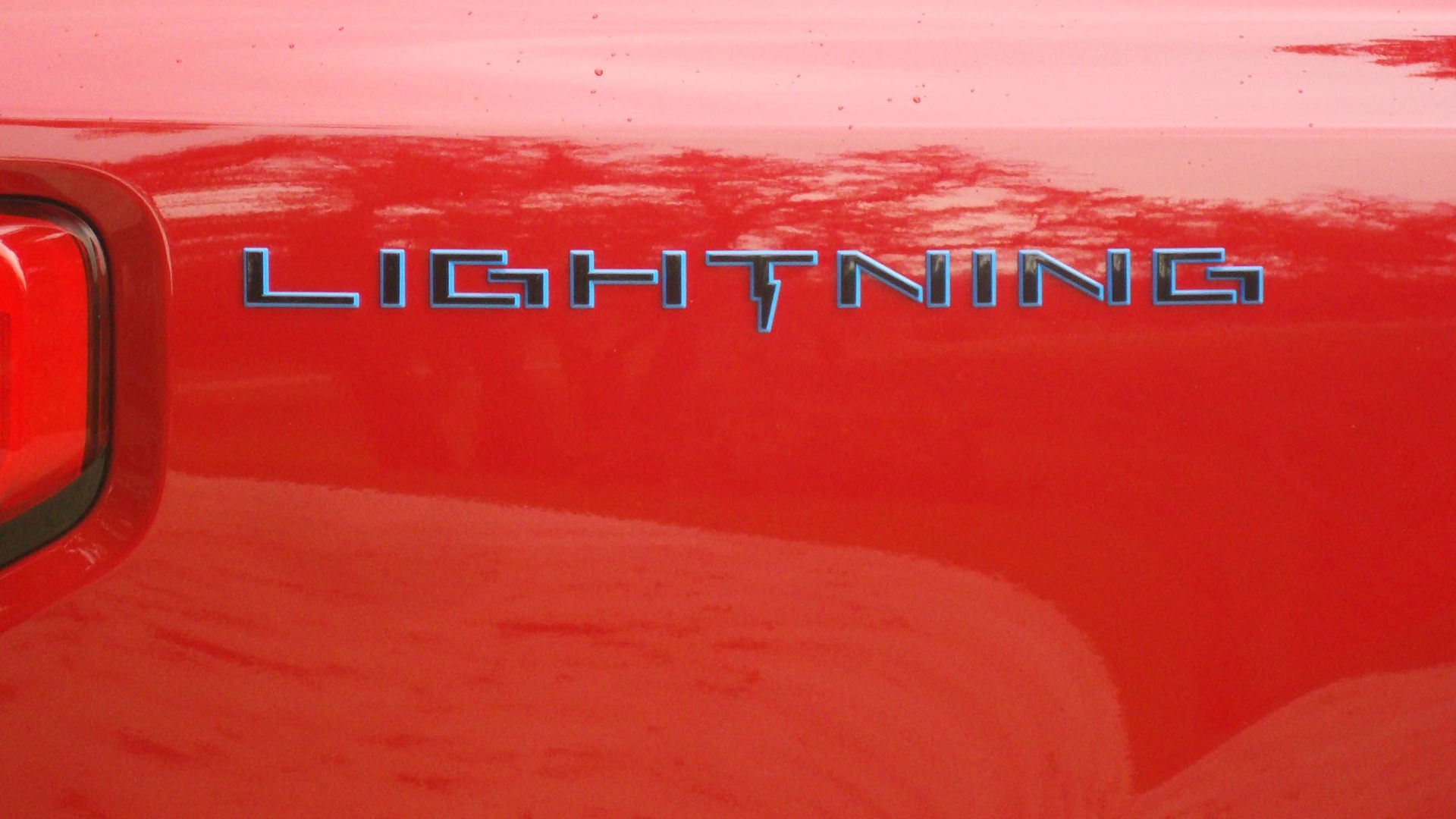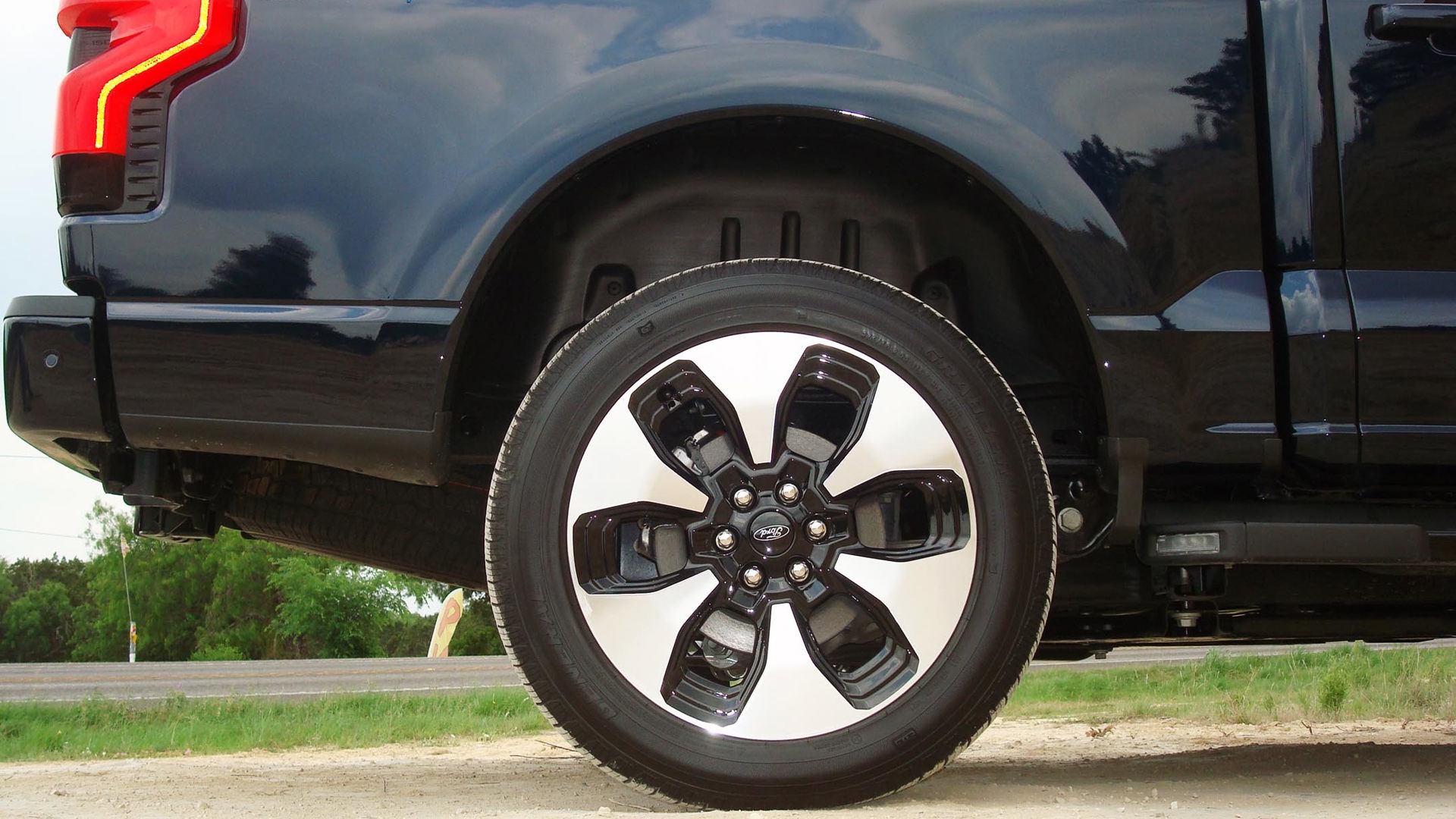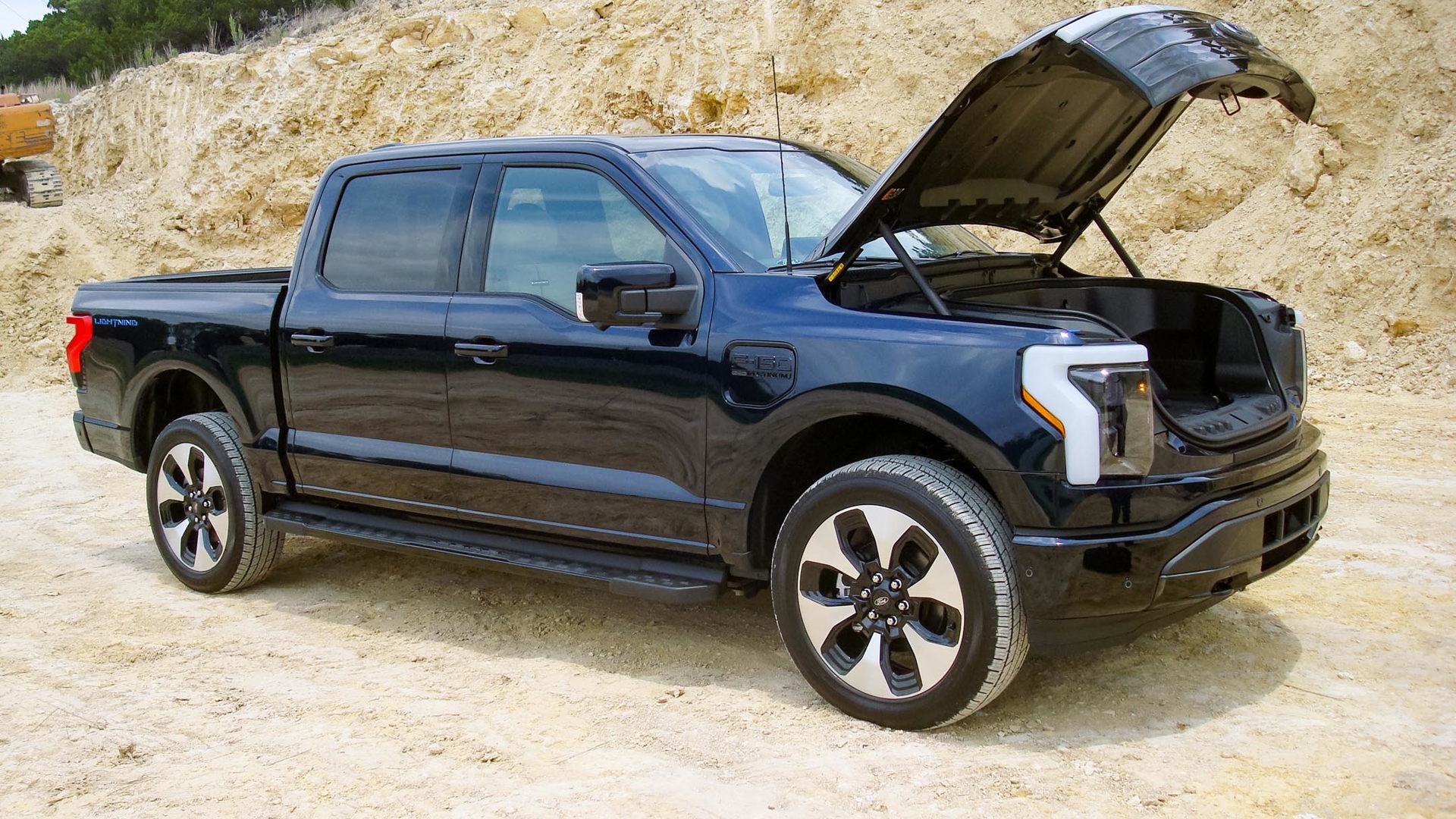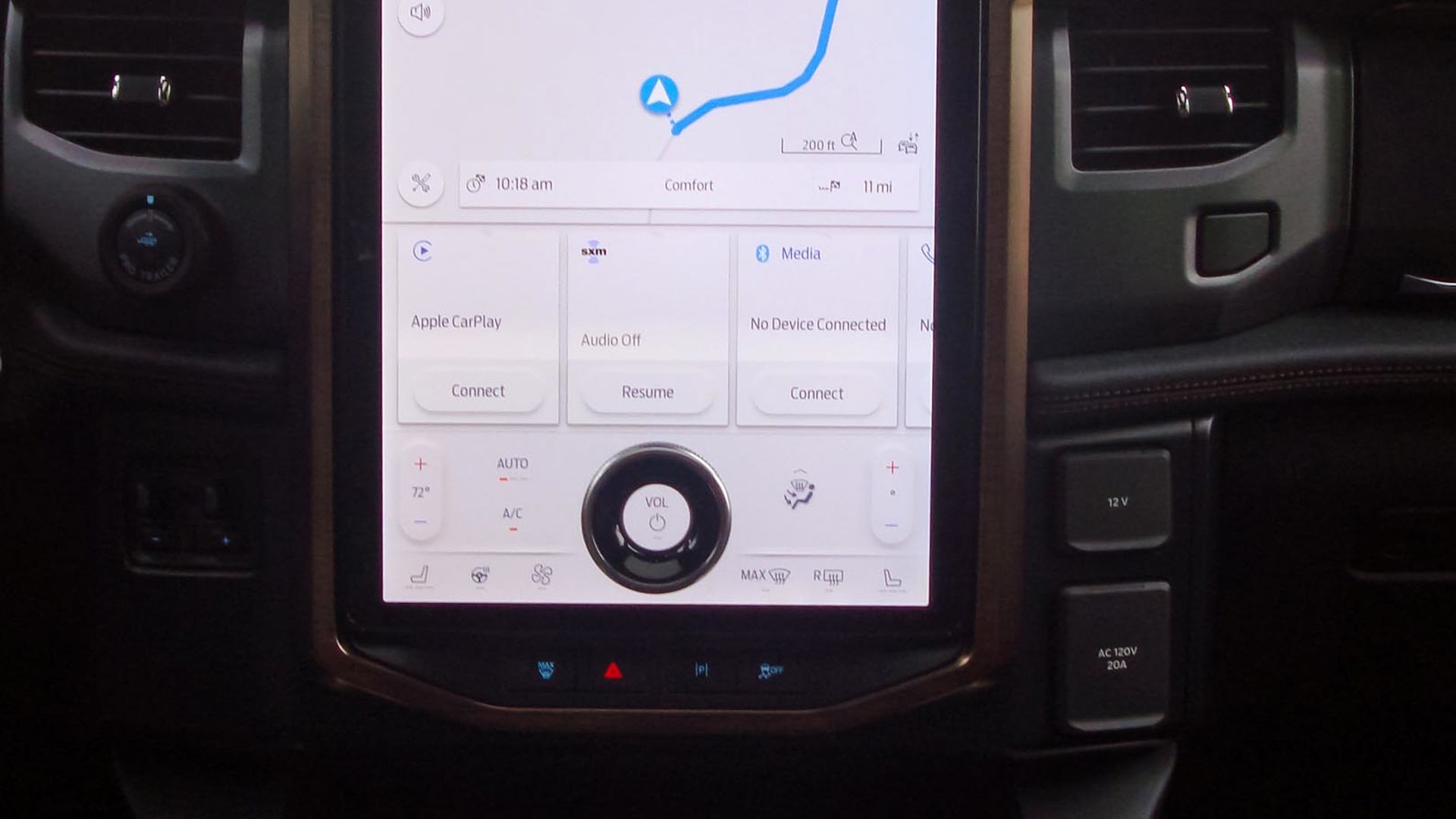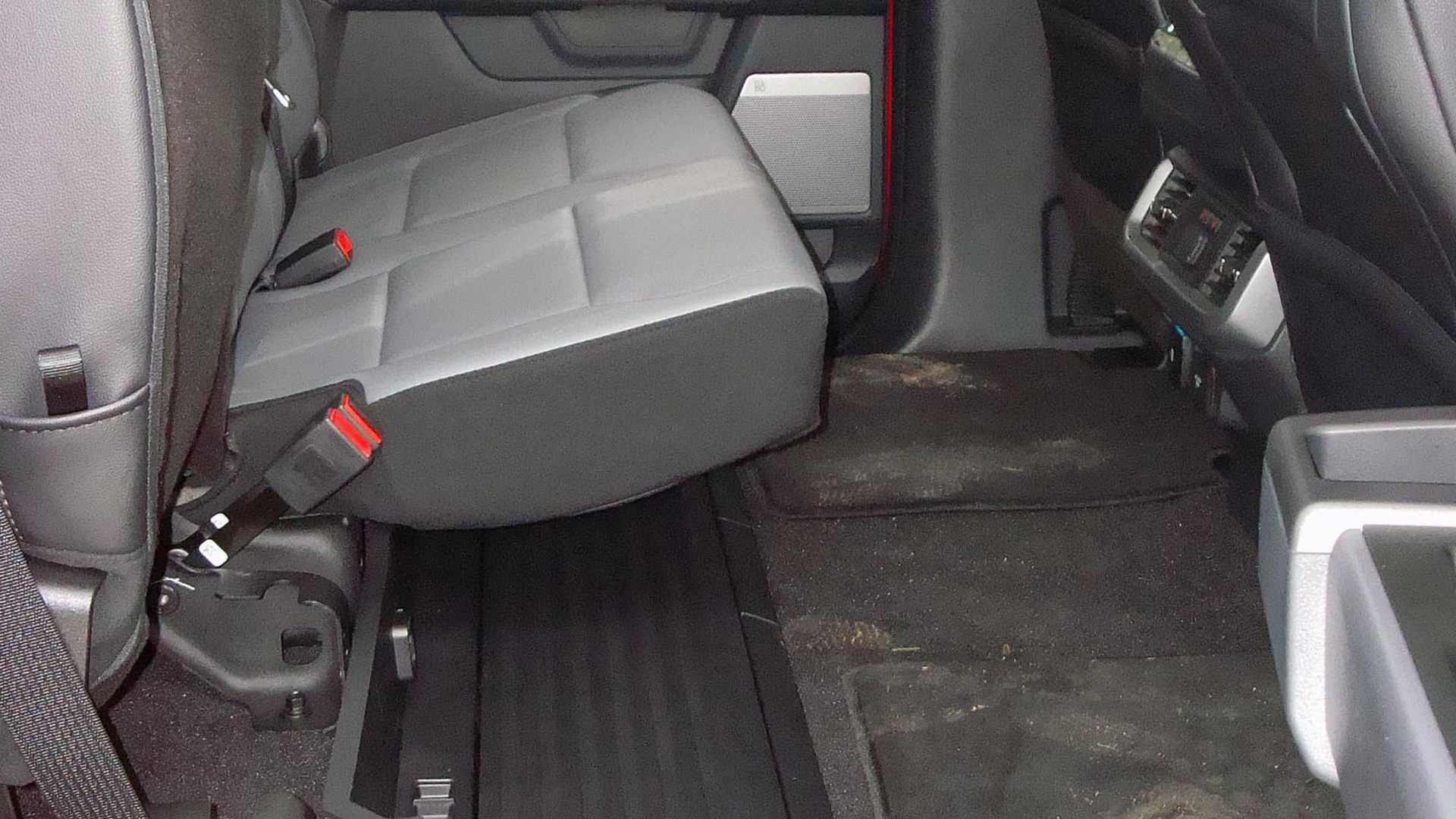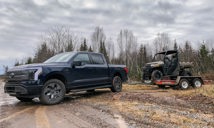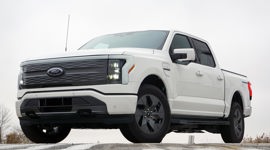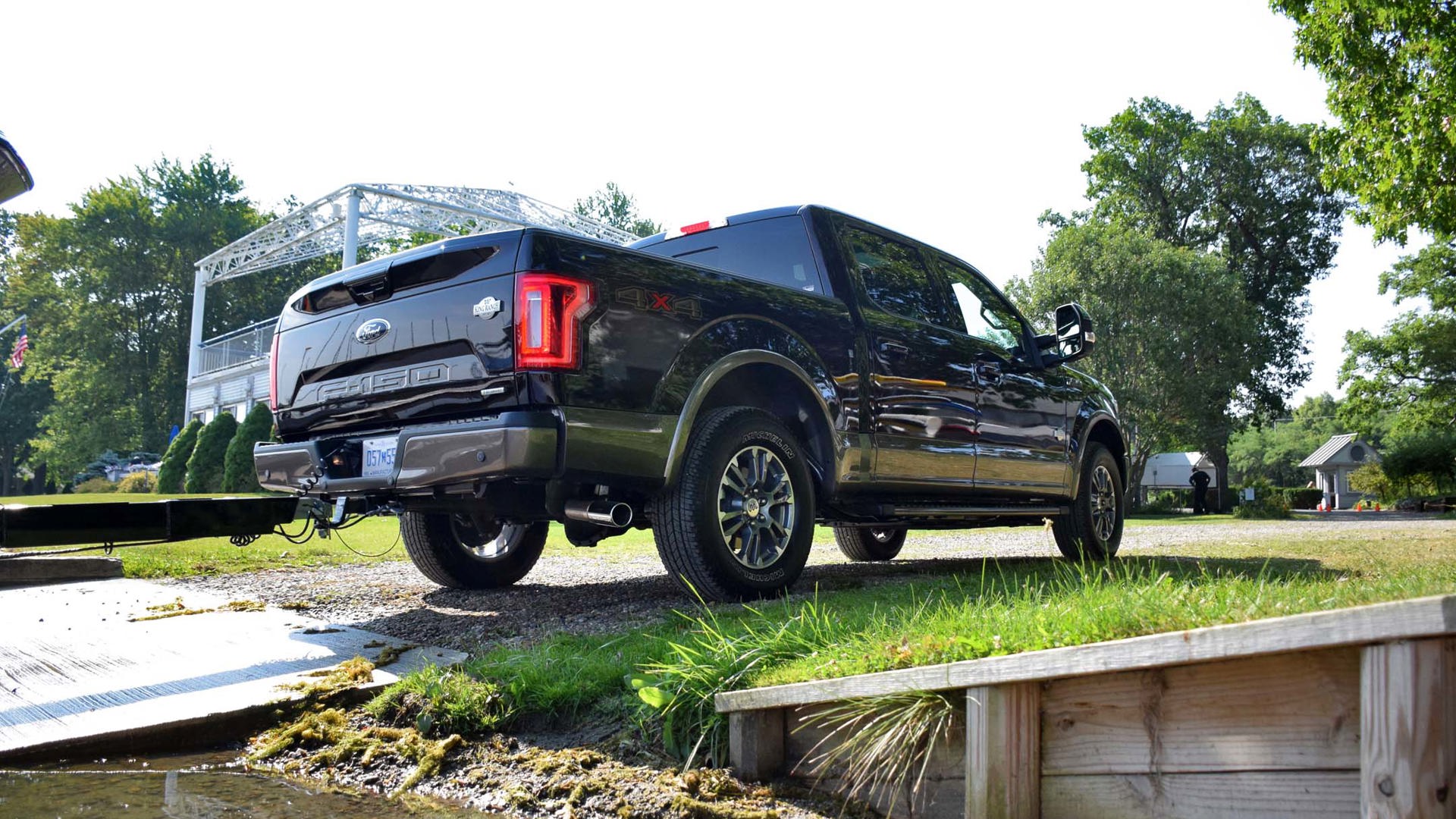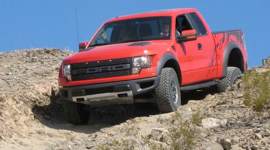Vehicles powered by electrons alone still only command a fraction of the overall market in North America, but most are still cars – not exactly the vehicle of choice for truck-crazed Canadians.
Electrifying the best-selling vehicle in land has the potential to really turn the tide, though, and with the all-new 2022 Ford F-150 Lightning, buyers no longer have to choose between electrification and their beloved pickup.
Same, But Different
Ford has blended just enough unique styling into the Lightning to set it apart from the traditional F-150, but it doesn’t look like a spaceship – a statement from Ford that suggests this is just another truck in the lineup. The solid front end and lack of a grille are what stand out most in the styling department, both of which are necessary as the new frunk needs to be sealed from the elements. A large LED light that stretches across the hood and wraps into the headlights is also unique to F-150 Lightning, adding a nice signature look at nighttime that also serves to distinguish the electric F-150.
Inside, the key difference is the availability of a 14-inch touchscreen in portrait orientation – larger than the 12-inch landscape screen used in other F-150 models (the 12-inch screen is standard in the commercial-grade Lightning Pro). Beyond that, the interior is all regular F-150, and that’s a compliment. It comes across well built and smartly laid out, and it doesn’t lose any of the clever features from the F-150 like the fold-flat work surface or lay-flat seats.
Endless Space
Going all-electric introduces two distinct kinds of new features: those that have been added thanks to the packaging of an electric vehicle (EV), and those that are made possible by having a massive battery pack sandwiched between the frame rails. First there’s the frunk. Ditching the engine leaves a cavernous space under the hood, which Ford has converted into a dry, lockable storage spot. Tap a button and the frunk pops open, revealing a set of plugs, a cargo net, in-floor storage, tie-downs, and even grocery bag hooks. Total volume is 1,495 L, and Ford is so proud the space can fit two golf bags that a pair of clubs was stamped right into the plastic.
The flat bed floor still exists in the Lightning, as does its standard 5-foot-5 length, which means you still get replaceable cleats, a tailgate step, spray-in bedliner, and all of the other features you’ve come to expect from a modern truck.
Then there’s the battery itself. There are two sizes available – a standard-range 98-kWh pack, and the extended 131-kWh unit – and besides powering the truck’s wheels, they have benefits at home as well. With the appropriate wiring, the Lightning will allow you to send power back to your house when it’s plugged in, say, during a power outage. And with a fully charged battery, you’ll be able to power the average household for a few days. That also means you could charge the truck overnight at off-peak hours, then use the reserves to power your home during the pricier daytime hours.
Once you’ve left home, the Lightning will also provide power thanks to its onboard inverter, with plugs located in the bed, frunk, and interior. Standard output is 2.4 kW, while 9.6 kW is available on upgraded models – enough to power your campsite or jobsite for quite a while. And don’t worry about range; a limit can be set to stop powering the plugs so you can get to a charger. Similar but smaller inverters are available with the conventional F-150, allowing the gas-only and hybrid models to also function like mobile generators.
Big Batteries Mean Big Charge Times
Beyond the positives that come with these big battery packs, there are drawbacks, too, like long charging times. The quickest charge time that Ford lists is 41 minutes for the extended-range battery to get from 15 to 80 per cent using a DC fast-charger – not especially common at the moment. The slower Level 2, which is what you can have installed at home, should charge the standard battery from 15 to 100 per cent in 10 hours, while the extended-range battery will take eight hours. [That’s not a typo, the larger battery charges faster than the standard battery when using the 80-amp Ford Charge Station Pro. – Ed.] End up on a basic mobile charger, and you’re looking at 13 hours for the standard battery and 19 for the extended-range unit.
Once fully charged, the standard-range battery is good for an estimated 370 km of driving, while the extended-range battery can take you 515 km, according to Ford.
A Different Drive
Pushing the accelerator pedal gives you your first true hint that this F-150 is different from the rest, as it shoots off the line and pushes your head back into the seat on its way to 100 km/h in less than five seconds. Standard-range models deliver 452 hp, extended-range packs have 580 hp, and both make 775 lb-ft of instantly available torque – and it’s sent to all four wheels at all times thanks to the dual-motor setup. Even pulling a 4,309-kg (9,500-lb) trailer barely slows this truck down when you mash the accelerator – one of the clear advantages of going electric.
The next difference you’ll notice from a gas-powered F-150 is the weight, and more importantly where it’s located. The Lightning weighs between 2,812 kg and 3,175 kg (6,200–7000 lb), depending on trim level, and a large chunk of that is the battery. That has shifted the centre of gravity rearwards and downwards, giving the Lightning a stuck-to-the-ground feeling that provides good handling and confidence with a load. Overall ride comfort is excellent when empty thanks to a new independent rear suspension that relies on coil springs rather than the usual leaf setup. And even with a heavy trailer hitched to the rear, the springs didn’t feel like they were squatting any more than an F-150 with leaf springs would.
The quiet is striking as you drive the F-150 Lightning as well. When you pay attention, you’ll notice a little more wind noise than you did before, but that’s because there is no mechanical white noise. That means only quiet voices are required to keep a conversation on the road.
The Lightning has four different drive modes: normal, sport, off-road, and tow/haul. Power delivery and throttle mapping change based on which mode you’re in, with sport giving you the most sensitive pedal, while off-road allows you to more easily modulate it.
All the Safety Stuff
Standard on all F-150 Lightnings is a safety suite consisting of forward collision warning with pedestrian detection and automatic emergency braking, blind-spot monitoring with rear cross-traffic alert, lane-keep assist, automatic high-beam control, rear parking sensors, and post-collision braking. You can also step up the package to get adaptive cruise control with stop-and-go functionality, while another package will add Ford’s hands-free driving technology.
Using the system, dubbed BlueCruise, on an interstate outside San Antonio, Texas, it worked fairly well, although it seemed to bounce around the lane a bit before it found its centre. Once on that line, however, the truck easily kept itself inside the lane. The system won’t execute lane changes for you or allow you to tow a trailer with it activated – deliberate decisions made by Ford to keep the driver more engaged. General Motors (GM) offers a similar system called Super Cruise that’ll do both.
Plenty of Choice
In Canada, the base-model Lightning Pro will only be available to fleet customers at a starting price of $58,000 before freight and tax. The cheaper consumer grade truck is $68,000, and that gets you into an XLT model, which includes standard features like a 360-degree camera, running boards, 10-way power cloth driver seat, interior work surface, leather-wrapped steering wheel, satellite radio, rear under-seat storage, and tie-downs in the bed. Move up to a Lariat and you’re looking at $80,000, while the top-trim Platinum is $110,000. The extended-range battery is standard on the Platinum model, while on the XLT and Lariat you’re looking at an additional $13,380.
Final Thoughts
Electrifying the best-selling vehicle in North America will be a true litmus test for the market, as up until now EVs have simply not been supplied in the most popular of packaging. Luckily, the 2022 Ford F-150 Lightning does a good job at staying true to all the F-150 does so well while adding plenty of benefits thanks to its onboard electricity – even if it’ll take a while to charge it in the first place.

